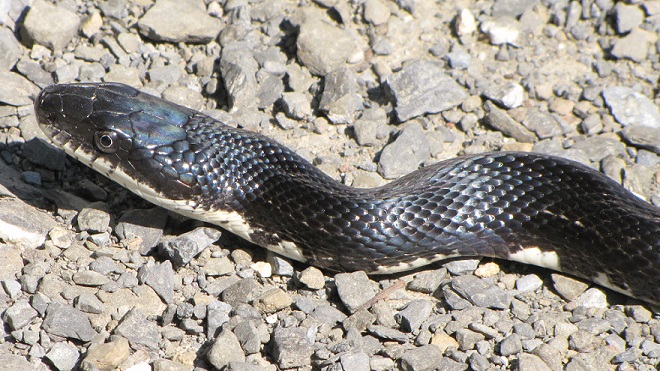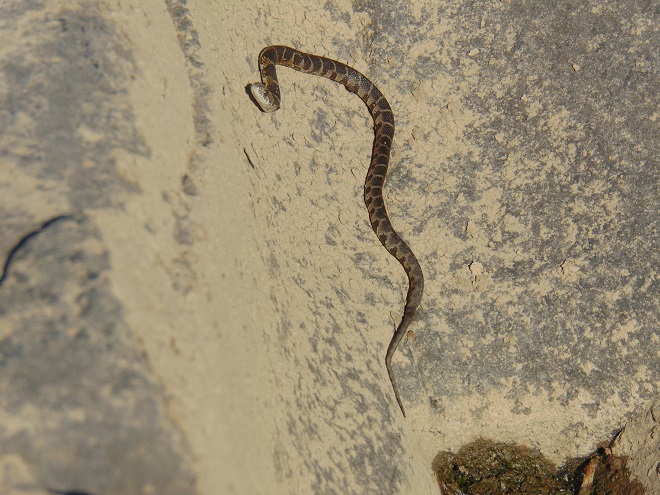
Photo of the Day


LIFE IN THE LOWER SUSQUEHANNA RIVER WATERSHED
A Natural History of Conewago Falls—The Waters of Three Mile Island


And now, a few words from the old watersnake who happens to live down along the creek where last spring’s Earth Day events were held.

Hey! You! Yeah You! I heard that there won’t be an Earth Day celebration down here this week. What a ssshame!
Remember how much fun we had last year. All those kids ssscrambling down along the creek bank throwing ssstones and ssscreaming and yelling like they’re gonna sssack a city. I ssshould have had the sssense to ssslither away. But no, I just curled up and played it cool. But sssure enough, one of the little brats found me and bellowed out loud enough for the whole countryside to hear, “SSSNAAAAKE!”
Ah nuts. That’s all it took. Here they come. Poking me with a ssstick. Taunting and ssstabbing. Don’t you know that hurts? What did I ever do to you, you rotten little apes? I’m telling ya, I get no respect.
Think that’s bad? It got worse. Don’t you remember? After a dozen of the runny-nosed monsters had me sssurrounded, one of the brain-dead adults yelled, “…it might be poisonous!”
That’s all it took. The ssstones got hurled my way and the poking with a ssstick became beatings. Those rats tried to kill me! On Earth Day! I ssslid into deep water and barely escaped with my life.
Now I want to tell you a few things—let’s get ’em ssstraight right now. I’m not, nor is any other watersnake in the SSSusquehanna valley, poisonous. Ssso don’t go villainizing me and those like me just because you have a monkey-like fear of us and need a sssocially acceptable reason to exercise your murderous instincts. Yeah, we know all about your manly tall tales of conquest that you ssshamelessly tell your friends and family after you kill a sssnake. Wanna be a hero? Then leave us alone! We and all of the native sssnakes of the SSSusquehanna valley, including the venomous copperheads and Timber Rattlesnakes, are minding our own business and just want to be left alone. Get it? Leave us alone! Don’t beat us with a ssshovel, mow over us, drive your car or truck over us, or ssshoot us. We have it bad enough as it is. You already buggered up most of our homes building your roads, houses, and lawns you know—so have a little respect. And one more thing, we don’t want be part of your pet menagerie. There’s no way we’ll “love you” or want anything to do with you, even if you do imprison us and make us sssubmissive to you for food, you sssick fascists. And that goes for you obsessive collector types too. We know you’re hoarding animals like us and calling your cruel little pet penitentiary a “rescue”. Yeah, we’re wise to that con too.

Ssso we’ve heard you won’t be coming down to the creek to terrorize us this year. No Earth Day event, huh. Well good, because I can’t take another Earth Day. Let the sssquirrels and the birds plant the trees, they do a better job than you anyway. Ssstay at home where you belong—watching television or twit-facing your B.F.F. on that magic box you carry around. And if you absolutely feel the urge to be upset by a sssnake in your midst, go visit that neighbor with the “reptile rescue”, I’m sssure he has a cobra or some other non-native sssnake in his collection that really ought to give you worry—especially when it finally escapes that prison.

A moderate breeze from the south placed a headwind into the face of migrants trying to wing their way to winter quarters. The urge to reach their destination overwhelmed any inclination a bird or insect may have had to stay put and try again another day.
Blue Jays were joined by increasing numbers of American Robins crossing the river in small groups to continue their migratory voyages. Killdeer (Charadrius vociferous) and a handful of sandpipers headed down the river route. Other migrants today included a Cooper’s Hawk (Accipiter cooperii), Eastern Bluebirds (Sialia sialis), and a few Common Mergansers (Mergus merganser), House Finches (Haemorhous mexicanus), and Common Grackles (Quiscalus quiscula).
The afternoon belonged to the insects. The warm wind blew scores of Monarchs toward the north as they persistently flapped on a southwest heading. Many may have actually lost ground today. Painted Lady (Vanessa cardui) and Cloudless Sulphur butterflies were observed battling their way south as well. All three of the common migrating dragonflies were seen: Common Green Darner (Anax junius), Wandering Glider (Pantala flavescens), and Black Saddlebags (Tramea lacerata).
The warm weather and summer breeze are expected to continue as the rain and wind from Hurricane Nate, today striking coastal Alabama and Mississippi, progresses toward the Susquehanna River watershed during the coming forty-eight hours.


